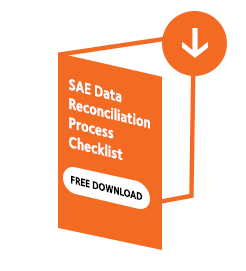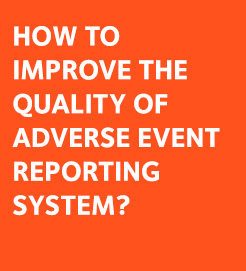Adverse events (AE) reporting is a pivotal element for the definition of a drug safety profile. The most common adverse events (AE)s as well as the Serious Adverse Events (SAEs) are monitored throughout the trial according to their specific status. Two databases are involved: the clinical and the drug safety databases. Reconciling the AE reporting information from the two repositories is a key element of safety data quality and a standard procedure in most clinical trials. Here’s five points to keep in mind for achieving data quality in AE reporting.
In a clinical trial, the clinical database where all data are recorded and cleaned, using an elaborate system of query-answer, differs from the safety database which relies mostly on the narrative description of the serious adverse event by the principal investigator (PI) or other physician if the event occurred outside of the investigational site.
The purpose and management of the clinical and safety databases differ. Making sure that those two repositories are consistent with one another is a challenging but essential process in terms of AE reporting, directly impacting the clinical trial data quality.
Any team involved in AE reporting should have in mind the five following considerations.
1. Start early
This could of course be a universal advice. Whatever the activity, starting early always gives more time to plan and set up, correct errors and put up with unexpected difficulties. In AE reporting and SAE data reconciliation, however, starting early is more than that. It allows teams to come together, review the types of data that will be reconciled and agree on basic rules, plan periodic meetings, set responsibilities and action plans.2. Involve all relevant functions
It is important to ensure that at least the following functions are involved in the process of SAE data reconciliation: drug safety/pharmacovigilance, who hold primary responsibility for AE reporting, clinical operations, who are responsible for the primary data collection, data management, as the keepers and managers of the databases, and biostatistics, for their key role in the clinical study report and summary documents (see box below).3. Plan regular meetings
Keep in mind that many of the larger studies have established Safety Monitoring Boards that need to receive and review clean SAE data. Team meetings to resolve any database mismatches in AE reporting must therefore be conducted periodically. Typically, all new discrepant cases are presented for discussion, and previously presented discrepancies that have been solved are also presented and confirmed. Of course, all relevant information must be readily available, and all issues, decisions and actions documented for quality purposes.4. Define tolerance levels
Exact match versus tolerated deviations is a key point to define upfront in order to avoid lengthy discussions during the reconciliation meetings. While many data points resulting from AE reporting can be matched exactly and corrected or completed in one or the other database, other types of data may tolerate a level of discrepancy with little or no impact to the meaning of the SAE information, especially if it is impossible of very difficult to retrieve the exact data. The level of tolerability in discrepancy must be agreed early on by all concerned parties.5. Consider using a software
A dedicated software can help clean up AE reporting data in many ways. One of the greatest benefits is perhaps the capability to record all the actions performed in the system in an audit trail, allowing to automatically document all changes performed in the safety or clinical databases. A data reconciliation tool, if well-conceived, will allow to automatically compare records from two distinct databases and search missing SAEs or discrepancies, detect changes in source data and spot the latest changes so that time is no longer wasted scrutinizing interim changes. It will also make it easy to manage all reconciliation-operations related tasks. Last but not least, a performing SAE data reconciliation software will be customizable to match the needs of a specific team and study.Ultimately, data quality in AE reporting supports the marketing approval of a safe and efficient drug. The most common AEs reported in the clinical database will be listed in the Summary of Product Characteristics (SmPC) and described in the drug package insert, and the SAEs captured in the Safety Database will be reported individually in the Clinical Study Report (CSR) and scrutinized by health authorities during the review of the marketing authorization application. Hence the importance of data quality in AE reporting.
Drug safety / pharmacovigilance are the primary responsible for AE reporting, owners of the safety information, the issuers of periodic safety update reports (PSUR) and ultimate creators of any new drug or device safety profile. Drug safety is the centerpiece of the reconciliation process, aligning medical expertise with the ownership of the AE reporting system.
Clinical operations are responsible for the primary data collection, keep close contact with the investigational sites and resolve all data inconsistencies via the query resolution process.
Data management are the keepers and managers of databases and have authority to give “green light” for database lock. As the role of software in clinical data management grew, so did the importance of Data management in the process of safety data reconciliation.
Biostatistics are involved very early on in a clinical trial process, from protocol writing until the end of the development, with a key role in the clinical study report and summary documents.
DOWNLOAD NOW THE FREE SAE RECONCILIATION HANDBOOK
The Manual / Reference Book with all the topics related to the Safety Data Reconciliation Management.







